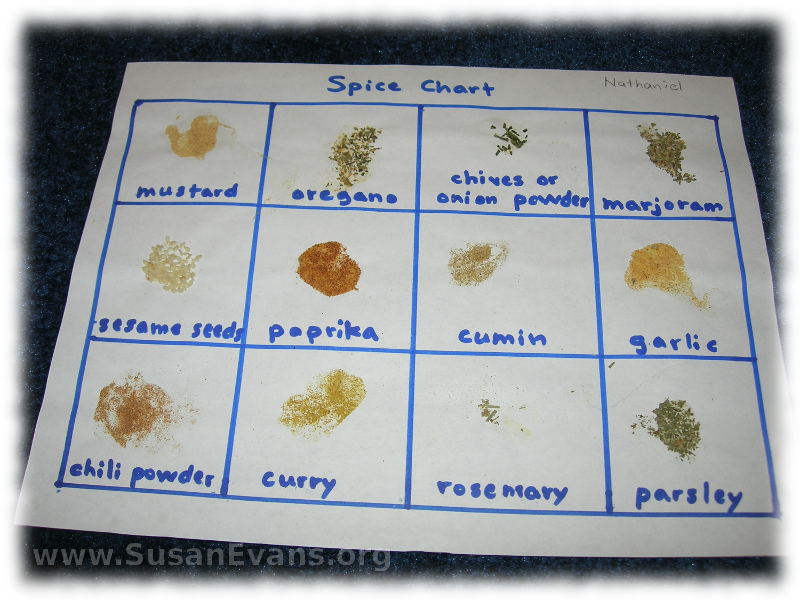No matter what your age, it’s good to be able to identify different spices by their look and smell. Make a spice chart to learn the different spices.
Even in early childhood, I did infant stimulation exercises with my babies, having them smell different spices while I was cooking or baking. When the children got a little bit older, we made a chart of different spices, making a grid and labeling each box. Then we put a circle of glue in the middle of a square and dumped a little bit of spice on it. If you pick it up, all the excess spice falls off. We did this with each square. The next day when it was dry, even my toddlers were sniffing the different spices, and my elementary-aged children told the toddlers what the spice was.
I recently saw a spice chart at the fair that is a variation on this idea. You make a “lift-the-flaps” chart by taping squares of paper on top of each square. Glue the spice onto the outside of the flap. See if you can identify the spice by the smell and the look. Then lift the flap to see the word, to check if you were right.
One time when my second son was 6 years old and was helping me cook, he cried out, “That’s not oregano, Mom!” I had accidentally gotten the wrong spice, and my son could tell by the smell that it was the wrong spice. I’m telling you, it’s useful to be able to identify spices.



